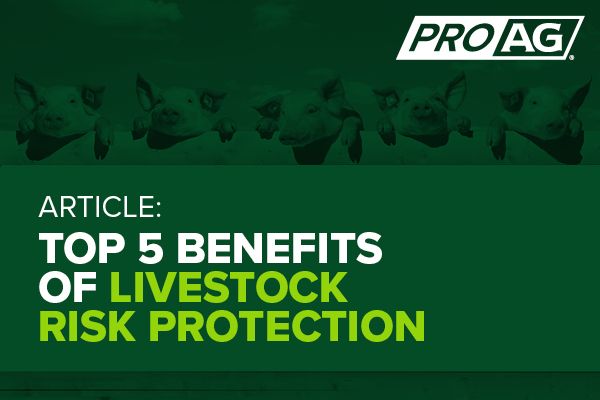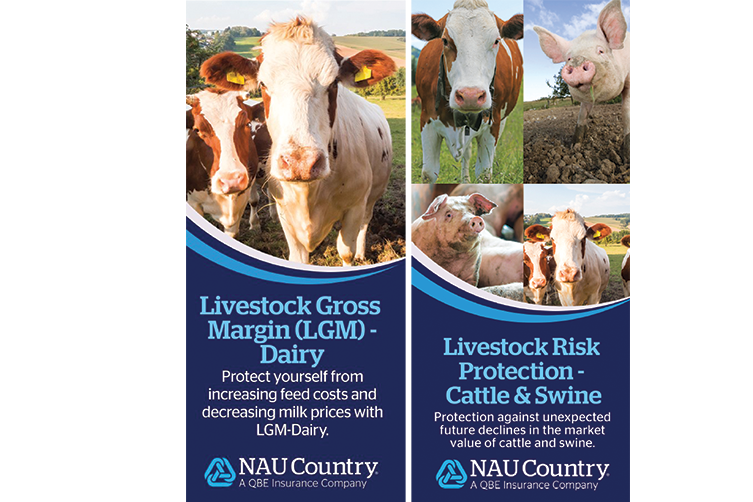Equip Your Organization: Bagley Risk Management Insights
Comprehending Animals Threat Defense (LRP) Insurance: A Comprehensive Guide
Browsing the world of animals risk security (LRP) insurance policy can be an intricate undertaking for lots of in the farming industry. From just how LRP insurance works to the numerous protection alternatives offered, there is much to discover in this comprehensive guide that could potentially shape the method livestock producers come close to danger monitoring in their businesses.

Exactly How LRP Insurance Policy Functions
Occasionally, recognizing the mechanics of Livestock Danger Protection (LRP) insurance policy can be complex, however damaging down how it works can provide clearness for ranchers and farmers. LRP insurance coverage is a risk administration device created to secure animals manufacturers versus unanticipated cost decreases. The policy permits producers to establish an insurance coverage level based upon their particular needs, picking the number of head, weight array, and protection price. As soon as the plan remains in area, if market prices fall below the protection price, producers can file a claim for the difference. It's crucial to note that LRP insurance policy is not an earnings warranty; instead, it concentrates solely on cost threat protection. The insurance coverage period typically ranges from 13 to 52 weeks, giving adaptability for producers to select a duration that lines up with their production cycle. By making use of LRP insurance, farmers and breeders can mitigate the economic dangers linked with varying market costs, guaranteeing higher security in their procedures.
Qualification and Insurance Coverage Options

When it comes to protection choices, LRP insurance supplies producers the flexibility to select the coverage level, protection period, and recommendations that best match their risk management requirements. By comprehending the qualification criteria and insurance coverage choices readily available, livestock producers can make enlightened decisions to take care of danger successfully.
Pros and Disadvantages of LRP Insurance Coverage
When reviewing Livestock Threat Protection (LRP) insurance, it is vital for livestock manufacturers to consider the disadvantages and benefits integral in this danger management device.

One of the primary benefits of LRP insurance policy is its capability to provide security against a decline in livestock rates. This can assist guard producers from financial losses arising from market fluctuations. Furthermore, LRP insurance uses a level of versatility, permitting producers to tailor protection levels and policy durations to match their details needs. By securing an ensured price see this here for their animals, manufacturers can better handle risk and prepare for the future.
Nevertheless, there are additionally some downsides to consider. One constraint of LRP insurance policy is that it does not safeguard versus all sorts of dangers, such as illness episodes or natural calamities. Furthermore, premiums can sometimes be pricey, specifically for manufacturers with huge livestock herds. It is critical for manufacturers to carefully examine their private risk direct exposure and economic situation to determine if LRP insurance coverage is the right threat administration tool for their procedure.
Comprehending LRP Insurance Premiums

Tips for Maximizing LRP Conveniences
Maximizing the advantages of Livestock Threat Security (LRP) insurance policy needs calculated planning and aggressive threat management - Bagley Risk Management. To take advantage of your LRP insurance coverage, consider the complying with pointers:
Frequently Analyze Market Problems: Keep informed about market trends and cost changes in the animals sector. By keeping track of Clicking Here these elements, you can make educated choices regarding when to acquire LRP insurance coverage to protect against possible losses.
Set Realistic Protection Degrees: When selecting protection degrees, consider your production prices, market price of animals, and prospective threats - Bagley Risk Management. Setting reasonable insurance coverage levels makes sure that you are adequately shielded without paying too much for unneeded insurance coverage
Diversify Your Coverage: Rather of counting only on LRP insurance, consider diversifying your risk management strategies. Combining LRP with other danger monitoring tools such as futures agreements or alternatives can give detailed protection against market unpredictabilities.
Evaluation and Adjust Insurance Coverage Routinely: As market problems alter, regularly review your LRP coverage to guarantee it aligns with your current danger exposure. Adjusting insurance coverage levels and timing of purchases can help maximize your danger security strategy. By complying with these suggestions, you can make the most of the advantages of LRP insurance policy and secure your livestock operation versus unpredicted threats.
Final Thought
To conclude, animals risk protection (LRP) insurance is an important tool for farmers to handle the economic dangers related to their livestock procedures. By comprehending More about the author just how LRP functions, eligibility and insurance coverage choices, as well as the benefits and drawbacks of this insurance coverage, farmers can make educated decisions to protect their source of incomes. By thoroughly thinking about LRP premiums and applying strategies to make the most of advantages, farmers can minimize potential losses and make sure the sustainability of their procedures.
Animals manufacturers interested in obtaining Livestock Danger Defense (LRP) insurance can check out an array of qualification criteria and protection options customized to their particular animals operations.When it comes to protection alternatives, LRP insurance coverage provides producers the adaptability to pick the protection level, insurance coverage duration, and endorsements that best fit their risk administration demands.To grasp the complexities of Livestock Danger Protection (LRP) insurance fully, understanding the variables affecting LRP insurance policy costs is critical. LRP insurance policy costs are figured out by different elements, including the coverage degree picked, the expected cost of animals at the end of the insurance coverage period, the type of animals being insured, and the size of the insurance coverage duration.Review and Adjust Insurance Coverage Routinely: As market problems transform, regularly evaluate your LRP coverage to guarantee it aligns with your existing danger exposure.